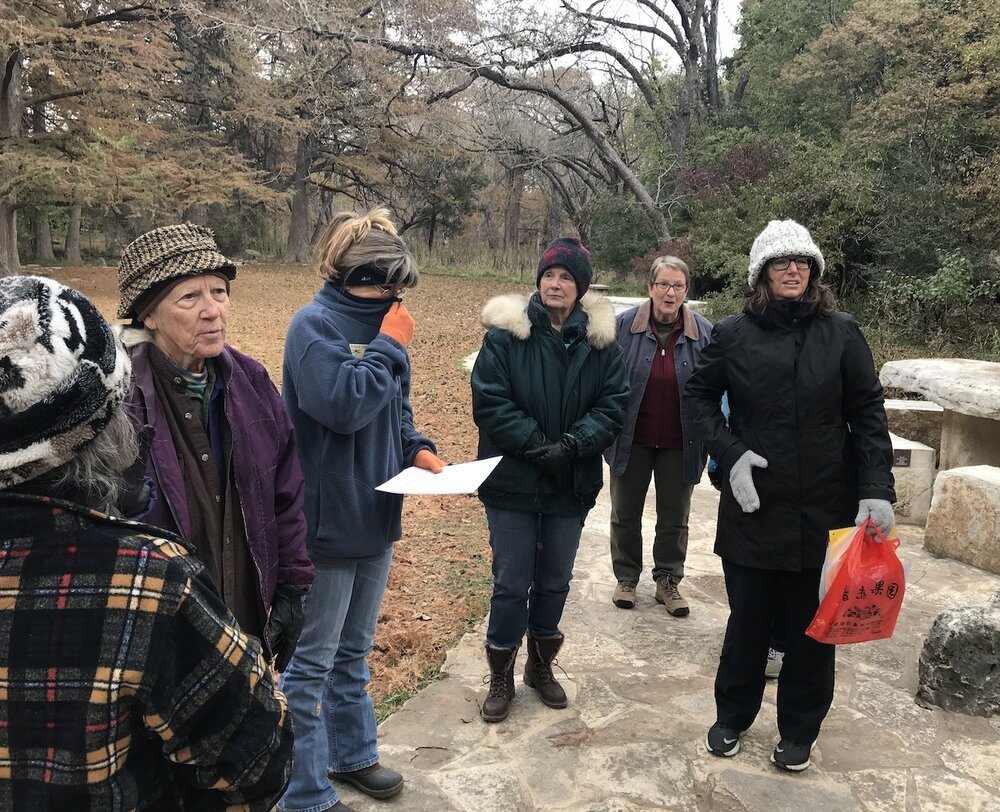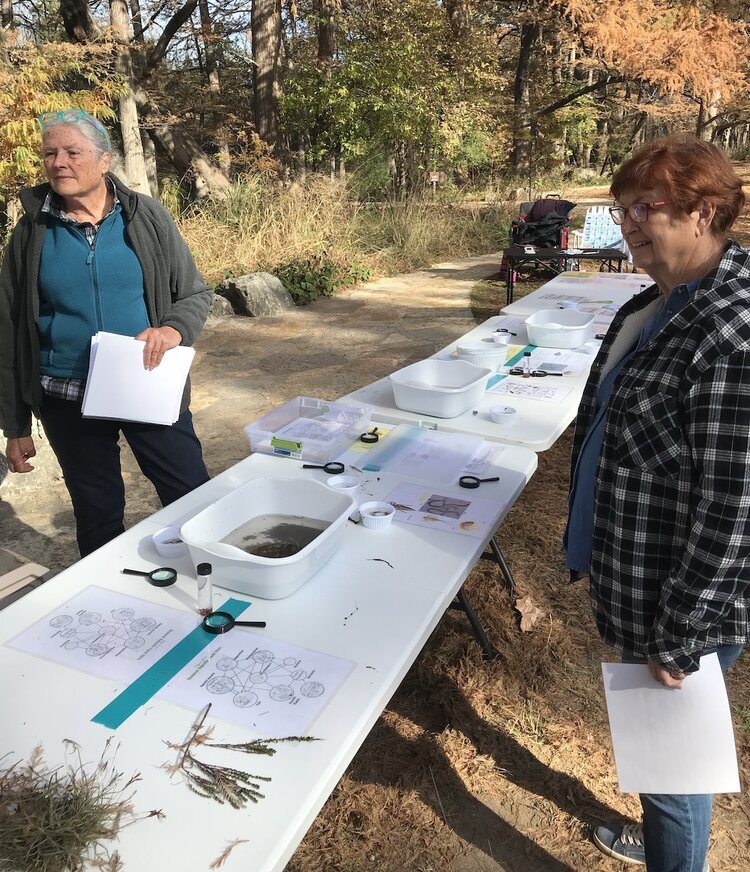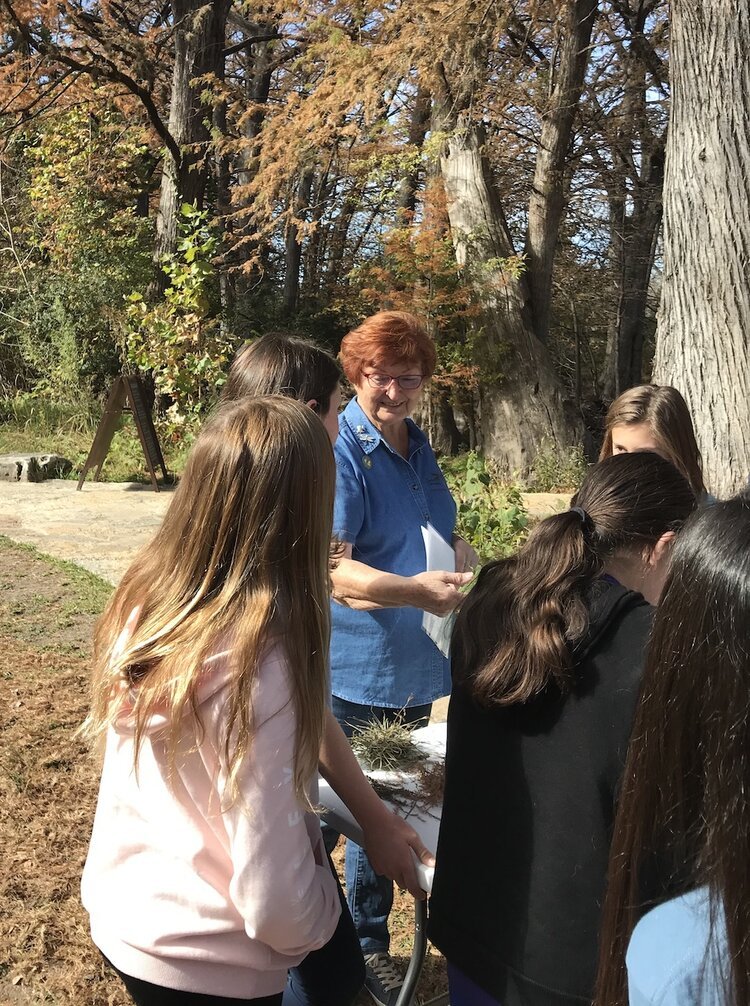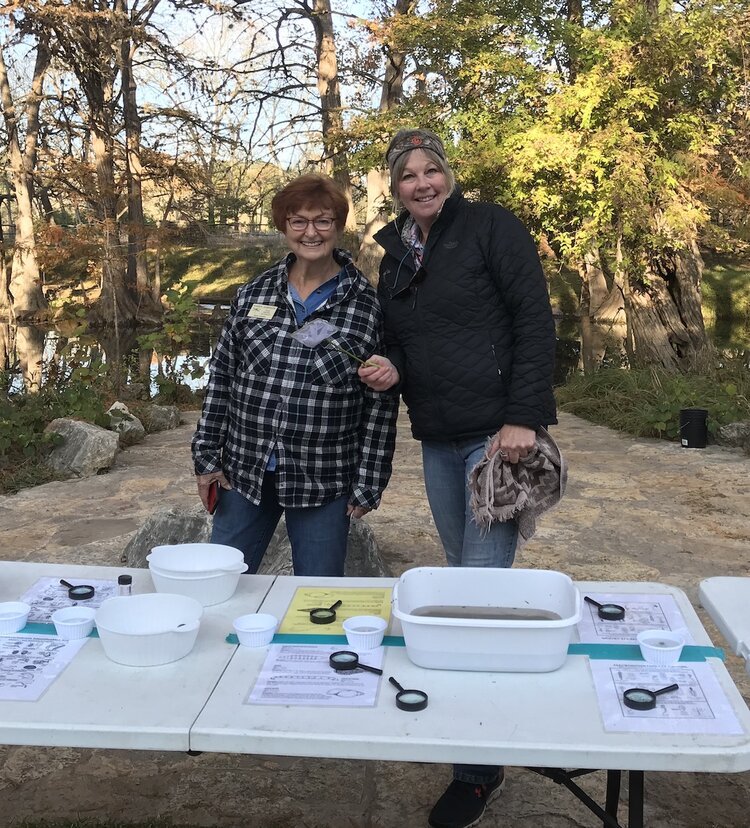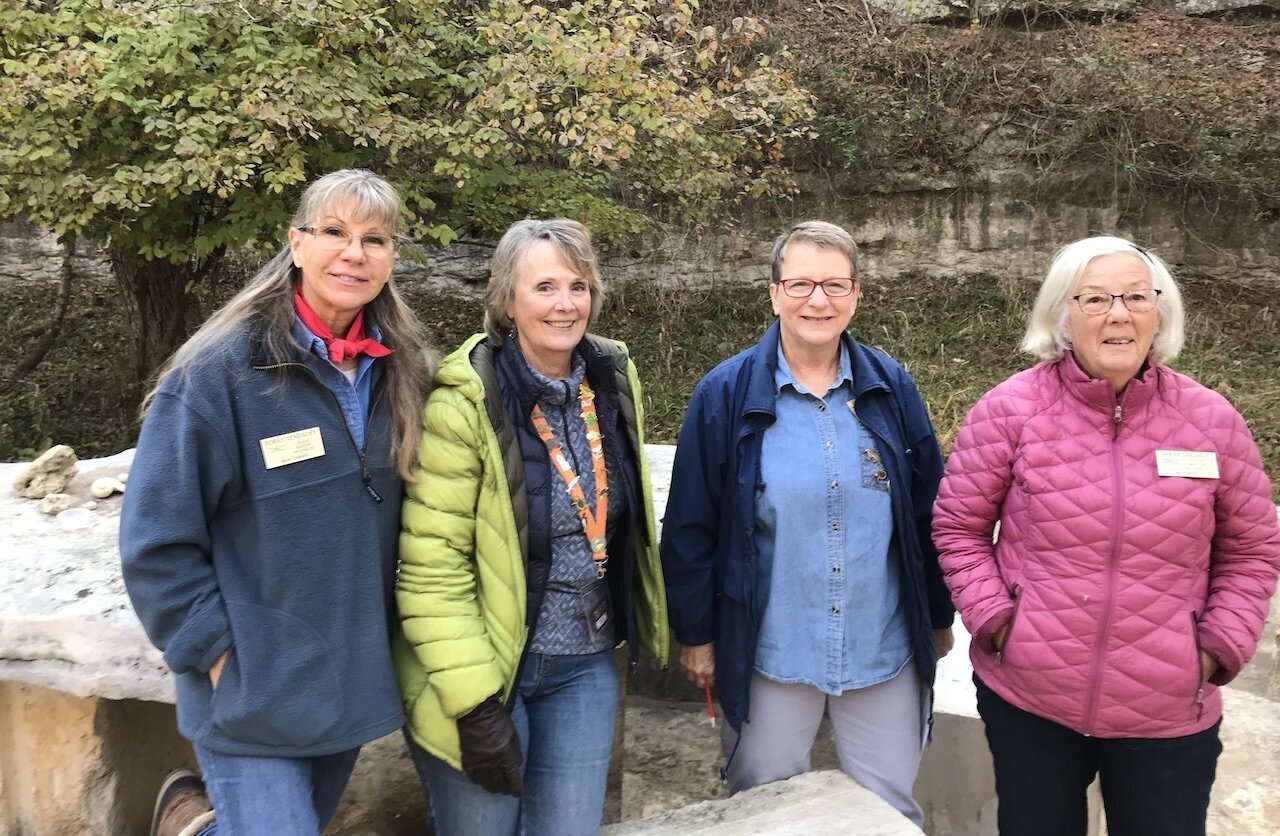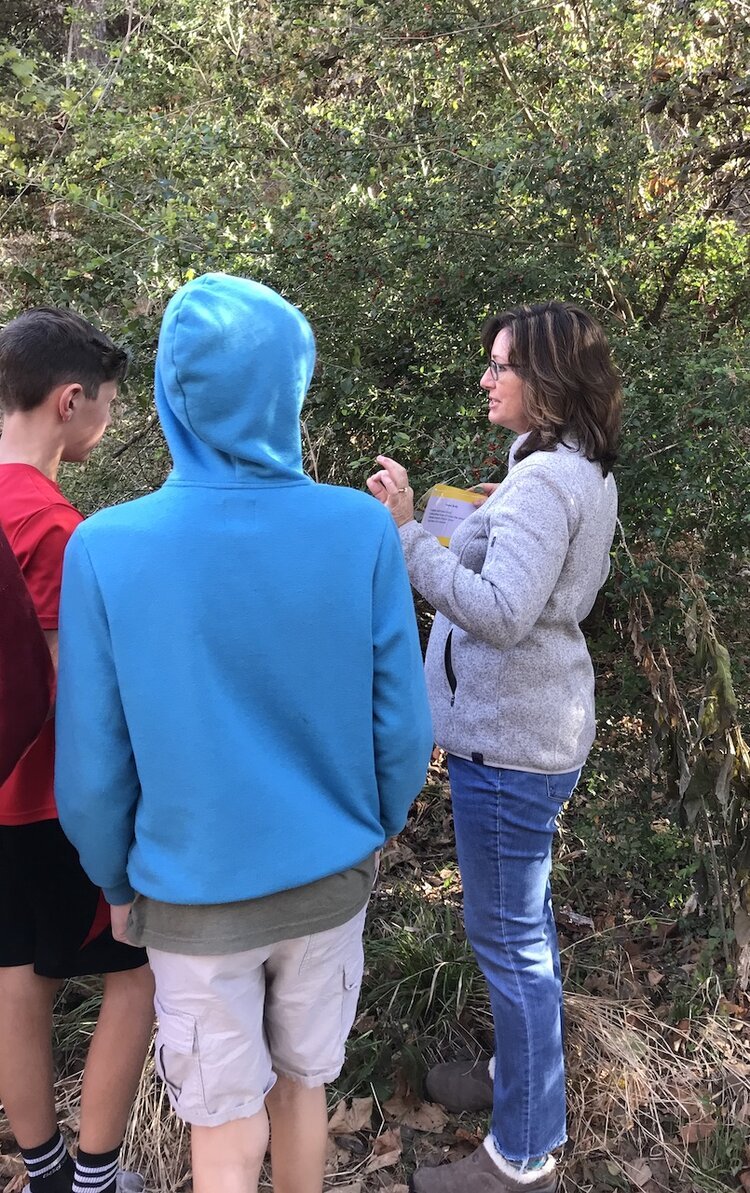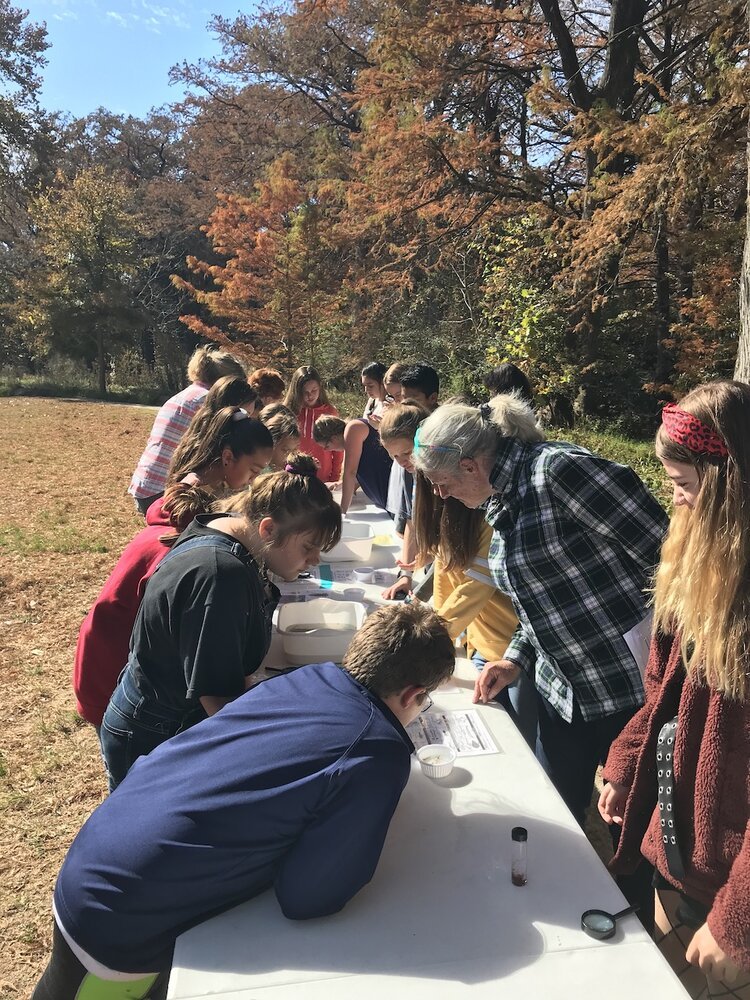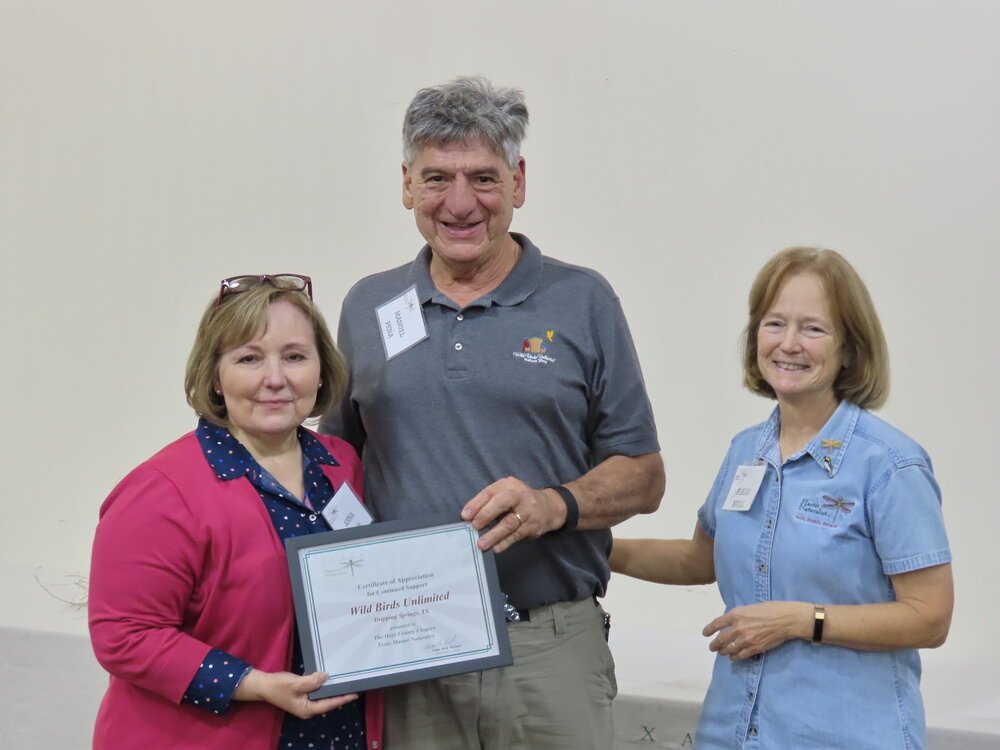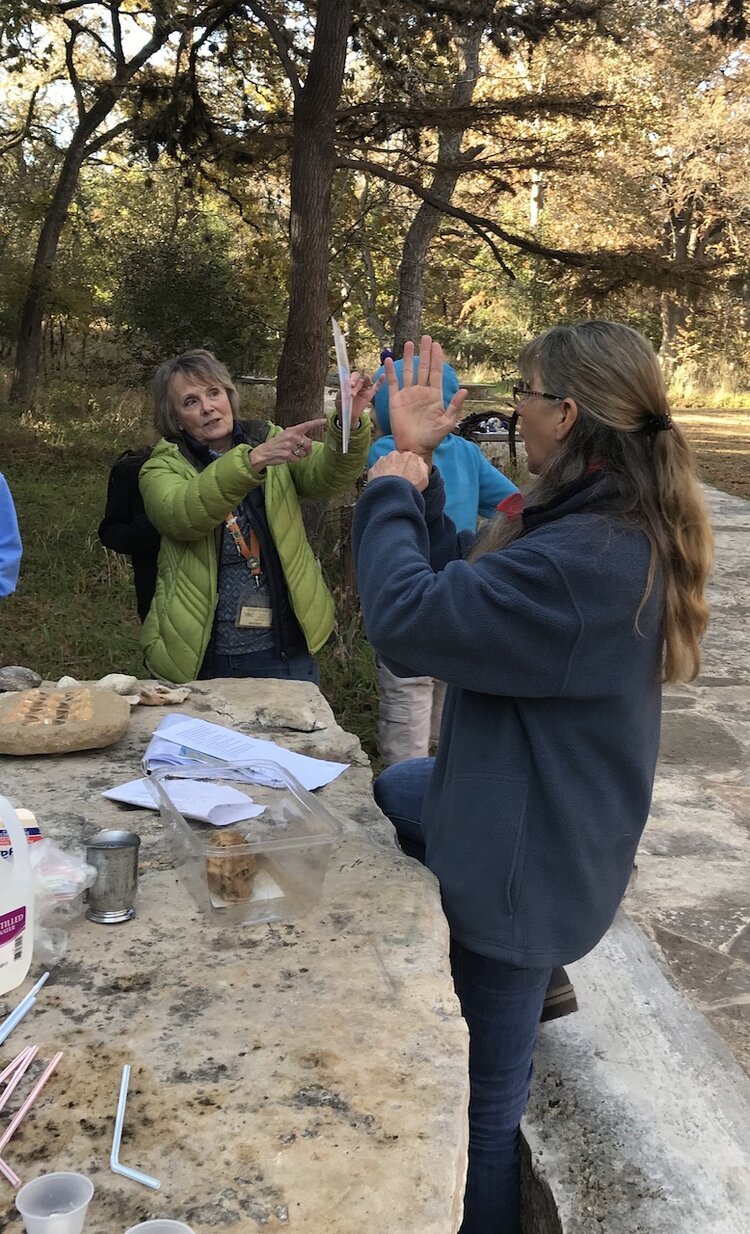The Hays Humm - December 2019
Tom Jones, Betsy Cross, and Constance Quigley
Cover Photo by Bob Currie
Article by Betsy Cross with Bob Currie and Salwa Khan
Bob Currie - 2011 Painted Buntings
Recently I had the pleasure of meeting Bob Currie and his wife, Salwa Khan, for the first time. Bob was on my shortlist of photographers and videographers to interview. Constance helped me catch up with him at the Patsy Glenn Refuge on the day of the Gala, and he agreed to meet with me the next week. I knew I was in a special place when I arrived at the address in Bob’s email. A tall chain-link fence surrounded the carefully tended property. Bob was standing on the front porch when I pulled up. As I walked in, I felt an underlying sense of the ‘we’ of Bob and Salwa, husband and wife team, professional partners for over 40 years.
“Salwa, you’re gonna love the Hill Country!”
“We were living in Washington, DC and we were wanting to move. We were seeking a place to raise our 10-year old son, away from the frenetic pace of the city. A friend, who was a UT grad, suggested we look at the Austin-San Antonio area. My work as a journalist had brought me to Texas, so I was familiar with the area. I said, ‘Salwa, you’re gonna love the Hill Country!’ We came down and found this place. A year later we moved here. That was 29 years ago.”
“One of my first jobs in TV was as a writer. One of my first producers was my wife.”
In DC, Bob and Salwa worked together in the high-pressure world of broadcasting and TV news, first for the local station WRC-TV and later in various roles for NBC, CBS, ABC, Fox, CNN, and PBS.
“I started doing film and motion pictures in high school in Charlotte, NC, with a Bell and Howell 16mm camera. I wanted to be an artist, and in college, I got a degree in Art History.”
Bob started his journalism career after college as a news writer for WRC-TV in Washington, DC. He moved up the ranks to become producer of consumer investigations and documentaries at WRC, where he gained recognition and awards for his investigative work. He produced a story revealing that hand-held hair dryers were discharging asbestos, which led to further investigation by the Consumer Product Safety Commission in 1979 and testimony before the US Senate Subcommittee for Consumers. In the same year, Bob produced an investigative report at WRC about soy baby formulas that were deficient in chloride and other nutrients. The impact to infants was life-threatening, with symptoms manifesting in a rare form of deadly kidney disease, loss of weight, slow growth, and general failure to thrive. The story resulted in the 1980 passage of The Infant Formula Act, sponsored by then U.S. Representative Al Gore of Tennessee.
In 1988, while Bob was working for Fox as a documentary producer, he helped start the TV program America’s Most Wanted. When he pitched the TV concept to the FBI, they balked and passed on the idea. But after the first broadcast resulted in the capture of one of the FBI’s “Ten Most Wanted” within four days of its airing, they came back to the table. The rest is history. The show ran for 25 consecutive seasons.
Today, Bob and Salwa have their own media company, vcYES Productions. They write and produce professional videos, mostly for museums and educational institutions, including Texas State University. The following video stories can be accessed on their website: Jacobs Well Natural Area, Hill Country Alliance Tenth Anniversary, 50th Anniversary – US Higher Education Act - The Legacy of Cotulla, and Texas Sea Turtle Rescue.
“The 20th Anniversary video was fun to do. I enjoyed meeting the people.”
When I asked Bob to tell me about producing the 20th Anniversary Video, for which he received an award at this year’s Texas Master Naturalist state meeting, I detected a slight change in his voice and a hint of enthusiasm for the question.
“I started with just a few names and began asking around - who do you know? Can you help us out? I met Billy Kniffen and Rufus Stephens in Kerrville. Walt Krudop and Dell Hood were in one of the first HCMN classes. Walt had been the videographer for those first classes. It took a couple of months to contact all the folks and put it together. I don’t enjoy the technology that much, but I enjoyed meeting the people. The 20th Anniversary video was fun to do.”
“The process? Well, it all goes back to art school and an empty canvas – what’s it going to look like? What’s it going to say? Time and money? Can I cast the right people to get the story told?”
“I listen. One of my best skills is listener. And I’m primarily a writer. Can you see the story? Can you shape it into words? And all while using the least amount of words.”
After Bob told me a little bit about his craft, I took another look at the video. This time I attempted to see it with new eyes, from the perspective of the producer. I ran it again and then one more time, and again. It opens with an Aldo Leopold quote, light music, and a convergence of bird songs and calls while the title fades in and out. Then as the camera zooms in on the Hays County Courthouse, we hear the beginning sentences of the Proclamation read by County Clerk Elaine Cardenas. Each passing scene provides visual context for the words of the Proclamation. It all flows so beautifully - the story of how TMN was formed, starting with Michelle Haggerty, her voice overlaid with visuals that support her storytelling. Next, the vision for Hays County Master Naturalist told by founder Billy Kniffen with Rufus Stephens. And then, after a carefully selected composition of interviews, photographs, and video vignettes, it returns to the reading of the Proclamation, highlighting accomplishments and commendations for the 20 years of work by Hays County Master Naturalist volunteers. The Fourth of July Parade clip provides a light-hearted “video emoji” endcap for the piece.
So I asked Bob about his art and how it came together so perfectly.
“Well, I recorded most of the bird calls for the introduction right here in our backyard, except for the owl. As far as the music goes, Dick [McBride] and I both use music tracks from SmartSound. When I met Billy and Rufus in Kerrville, I wanted to find an outdoor setting that would add interest and be representative of the work of Master Naturalists. I hadn’t been there before, so I went to Google Earth and found the river in a park and zoomed in and located a bridge. On the day of the shoot, I had them meet me there, and I videoed them walking and talking together as they entered the scene with the bridge in the foreground.”
“A lot of the other footage, including the Patsy Glenn rainwater collection project, was from my archives, which takes a lot of organization to identify and find. Returning to the reading of the Proclamation at the end is a technique called a ‘donut’, where you circle back around to where you started. All-in-all it was about 50 hours of work.”
I was curious if Bob had planned the whole thing out in advance, if he gave the interviewees scripts or questions beforehand, if he knew from the get-go what it would be or if it had evolved and emerged gradually as he did his magic. The final product seems so simple, so concise, poetic. Here’s what he said:
“With 40 years of experience, you learn how to do listening. You are identifying the sound bites and putting it together, creating an outline in your head. I don’t think it’s conscious anymore, it’s all just part of the creative process, even in the shooting.”
As we wrapped up, I asked Bob what the future holds for him and Salwa.
“We are dedicated to living our commitment to sustainability and a program of sustainable agriculture.”
I was moved by the precision and intentionality of their urban landscape – a rainwater collection system, solar panels on the roof of their home, all-native landscape with a wildflower meadow. Bob and Salwa produce their food in raised garden beds.
“We’ve been building our soil since the beginning by composting our leaves and the leaves of our neighbors. They bring us bags and loads of leaves!” As Salwa says, “Good soil is the basis for everything. Over the years we’ve planted fruit trees and berries – peaches, apples, plums, figs, kumquats, olives, mulberries, blackberries, and blueberries.”
One of their neighbors was throwing out a small greenhouse, which they quickly claimed. It is now housing chard and other winter vegetables in their backyard. They have 10,000 gallons of rainwater capacity for irrigating their organically grown produce and a smaller collection system for cooking and drinking.
“A Labor of Love”
Salwa is producer and host of a monthly radio program and podcast called Mothering Earth, which can be heard on Wimberley Valley Radio. She recruits and interviews subject matter experts on sustainability, conservation, and gentle living for the protection of Mother Earth. 65 podcasts are available at www.gardentoad.com/toadtalk and www.soundcloud.com/salwak. Some of the top tracks include OneWater, Protecting Bees, Invertebrates, Organic Farming, Controlling Invasive Species, Wind Power, Drought-Proof Your Land, and Native Plants. Salwa would like more podcast subscribers, “but right now it’s a labor of love.” Bob adds with a smile, “I’m the audio engineer, driver, and security.”
Bob is also the official coordinator for The Patsy Glenn Refuge. He is active in maintaining the park and oversees new projects, including the installation of a rain water collection system and planning for a future water feature, either a rain garden or a pond. And Bob has taken up a new hobby recently, “I’m getting out of video and into wildlife and landscape photography.” He took a class from Tom Hausler and has joined the Hill Country Photography Club. He would like to do drone photography, but he keeps crashing his drone. He showed me an aerial shot of the changing foliage of cypress trees along Cypress Creek shot by Hill Country Photography Club member Terry Brimm. “That stuff excites me!” Bob invited me into his studio, where I saw the evidence of a broken drone, along with a wall full of awards, a poster of Barack Obama and Joe Biden, a poster signed by Willie Nelson, and other interesting stuff!
Thank you, Bob and Salwa, for having the patience to sit with me, an amateur in the presence of professionals, and for sharing your interesting stories and accomplishments. You have both provided wonderful gifts to all of us! Happy Holidays!
Bob Currie Photography
Great Blue Heron
Panasonic Lumix GH3
Black Witch Moth
Panasonic Lumix GH3
Buck's Loti
Galaxy S8 Phone
Mt. Baldy
Galaxy S8 Phone
Riders In The Sky
Galaxy S8 Phone
Pelican
Panasonic Lumix GH3
Great Horned Owl
Nikon Coolpix P900
Great Horned Owlet
Nikon Coolpix P900 - photo selected for Hill Country Alliance 2020 Calendar
MEET YOUR MASTER NATURALIST
Mike Davis
About Me: Meriam Webster defines artist as “One who is adept at something”. I am endeavoring to develop my vision of the natural beauty surrounding me as I go through my daily life”. I sincerely desire to become adept at describing my natural world through photography. Focused primarily on textures, color and variety – the development of the requisite photographic skills to highlight these goals is and will be a life-long challenge.
My alternate passion is Fly Fishing and fly tying. Why I love fishing – especially Fly Fishing is illustrated by the following quotes:
“If people concentrated on the really important things in life, there’d be a shortage of fishing poles.”
“Many go fishing all their lives without knowing that it is not fish they are after.”
“If I fished only to capture fish, my fishing trips would have ended long ago.”
Favorite Master Naturalist Activity: I have been active in the invasive plant Arrundo removal project with Texas Parks and Wildlife. The interaction with the professionals of the department has been amazing.
Bird I most identify with: Well of course, the Belted Kingfisher, easily the most efficient fisherman on the water. I have learned a lot about fishing from this little bird.
Angling lessons from the Kingfisher:
Persistence – keep at it.
If an area is unproductive – Move.
Look carefully at the surroundings - it is the little things that make an angler successful.
The key is stealth and ease of movement.
On the first Saturday in November, Hays County Master Naturalists and Master Gardeners teamed up with Katherine Sturdivant, Education & Outreach Coordinator - Hays County Parks, to host a Family Fun Day at Jacob’s Well all about pollinators. HCMN participants included Mel Seib, Chris Middleton, Irene Bonde, Paula Glover, and Betsy Cross. Master Gardeners were Joe Blanford, Ila Gandy, Connie Wierman, Daina Skiles Slover, and Phyllis Janowski. The Bat Association at Texas State also supported the event.
Outreach in Action
Reaching out to those who are not familiar with the Master Naturalist program began in 2019 with an increased presence at the county’s festivals, family programs, and community workshops. Based on statistics kept, more than 1100 adults and 300 youth stopped by our tables at come and go activities or came to hear speakers present educational seminars. Of those numbers, approximately 150 new prospects signed up to be made aware of future classes.
Paul Yura, National Weather Service, and Sue Harding, Outreach Team
Paul’s presentation at the Dripping Springs Library on Nov 21.
On November 13th, the Wimberley Outdoor Educator team hosted almost 200 7th grade students for their field trip to the Blue Hole Regional Park. Gracy Belle Broussard & Mel Seib led a HCMN team to challenge and educate the students in three different areas of knowledge. The Water Station at the Blue Hole provided information about watersheds, Cypress Creek and table exhibits on aquatic invertebrates. The Cliff Station teaching about fossils and also with many table exhibits. The Plants Station examined the wide variety of native plants around the park and taught how to identify plants from a key. It was a fun and educating day. Check out the photo carousel below.
